Do you have antique wicker furniture questions? Wondering about your prized wicker heirloom furniture or flea market wicker finds?
Need to know about the antique or vintage wicker you love and want to preserve? Then you’ve come to the right place for answers.
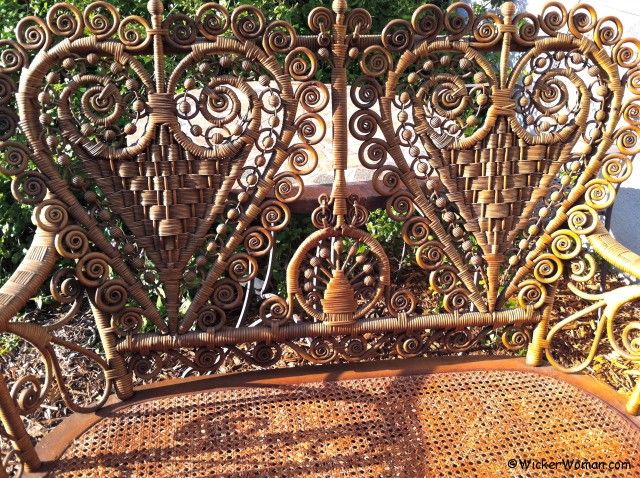
Cathryn shares her knowledge here by answering some of the most frequently asked questions (FAQ) about wicker that she’s received over the last 50 years in the wicker restoration business. Enjoy!
This page may contain affiliate links since WickerWoman.com is a participant in the Amazon Services LLC Associates Program, an affiliate advertising program designed to provide a means for sites to earn advertising fees by advertising and linking to Amazon.com. When you make a purchase through one of these links, I receive a small compensation without any extra cost to you.
Q: What were antique wicker furniture pieces made out of?
A: There are many types of materials used in creating wicker furniture, but the two main types of wicker materials are “rattan reed” and “paper fibre.” Stick or Pole Rattan, Oriental Seagrass, and Bamboo were a few of the others. For a more thorough discussion on the materials used in wicker furniture manufacturing, click on the articles page.
Q: What’s the difference between “real” wicker and “paper” wicker?
A: They’re both real wicker, but I think you are referring to the difference between rattan reed wicker and paper fibre wicker.
Reed wicker can snap and break like a twig or stick and is a naturally growing material, whereas paper fibre wicker is actually a man-made twisted paper product and can be unraveled.
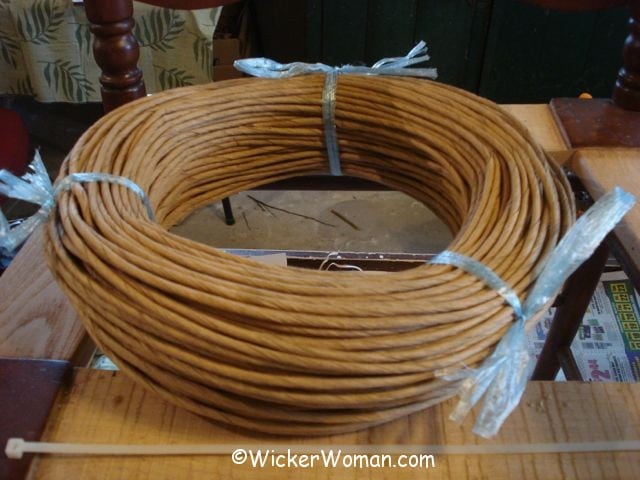
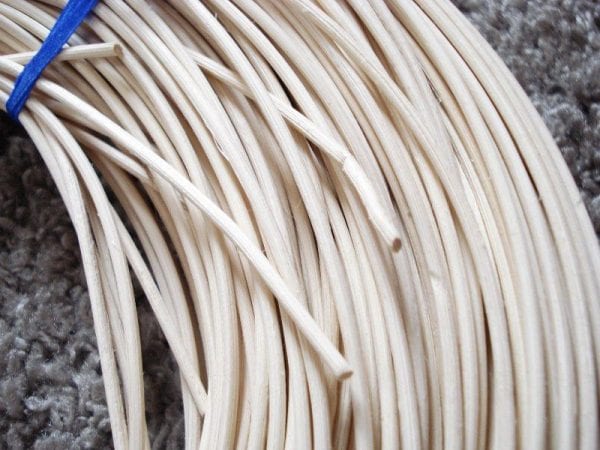
Paper fibre (spelling denotes man-made material, not natural), like the Art Deco-era paper wicker pictured above left, was invented in 1904.
It is normally the color of a brown paper bag when in its natural unstained or unpaired state, and is the same material used in paper rush seat weaving. It’s twisted and has the diagonal lines somewhat like an old-fashioned barber pole, peppermint stick or rope.
Wicker manufacturing companies either dyed, stained, or painted most pieces before they left the factory. Those that were dyed or stained also had a final clear coat finish of varnish or shellac for protection. Read this article on paper fibre rush for more information about this manufactured process.
Q: How do you tell the difference between wicker and cane?
A: Generally speaking, there is no such material as “wicker.” Instead, the word refers to the act of weaving chair seats and furniture, or it’s the final end-result product, such as a woven chair, couch, buggy, or basket. So, wicker refers to the act of weaving or it is the final woven article made using a variety of materials and is not a material itself.
The most popular materials used in the construction of antique wicker furniture were rattan reed and paper fibre rush. Cane is the outer skin or bark of the rattan palm, processed into strips. It is most often used in weaving seats and backs of wood frame furniture or wrapping joints in pole-rattan wicker furniture.
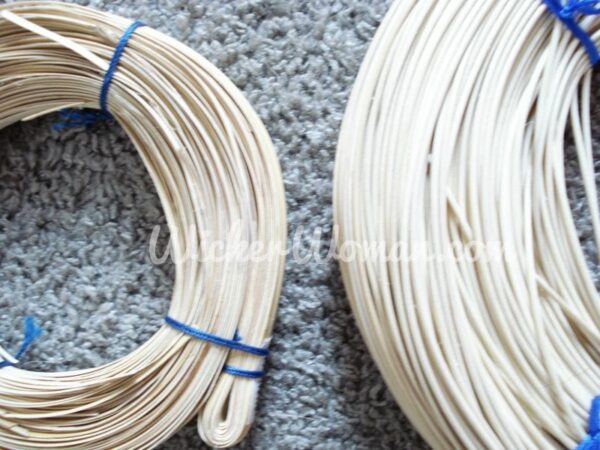
Although sometimes cane, rush, or splint seat chairs are also referred to as “wicker” pieces, they are more correctly referred to by the materials used in the woven seat and the design or pattern.
Take a look at my Seat Weaving page for more thorough information and pictures of the various materials and patterns used in “chair caning” and other types of “chair seat weaving.”
The Wicker Repair page has more information and pictures on antique totally woven “wicker” furniture.
The form you have selected does not exist.
Q: Is it OK to use my wicker on my deck?
A: Yes, it’s OK to use your wicker outside on your deck, but leaving it out there permanently, exposed to all the weather elements, is not a good idea at all.
Be sure to bring the wicker furniture in at night and store in a protected area. Although reed wicker, skin-on rattan, and cane bark strands are natural materials that grow in rainforest areas, they are dead after being harvested. So they can be easily damaged by rain, snow, sunshine, and wind.
Skin-on rattan furniture or rattan that still has its bark on and has not been removed in processing has a natural glossy finish. This skin, too, will wear off over time, especially if left outdoors and subjected to the elements.
The weather elements will eventually rot the fibers of natural wicker furniture and will totally destroy them after a period of time.
Also, the hardwood frames might warp or rot, or the paint may get damaged and peel or flake off.
No amount of wood waterproofing products will prevent this reaction; they will only prolong the life of the piece for a while.
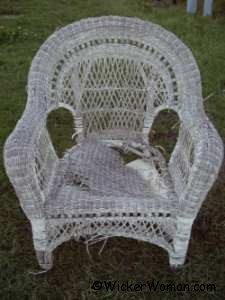
In my opinion, you are wasting your money if you try to weatherproof your wicker furniture with any of the products on the market right now, other than Marine varnish and/or paint, which also have limitations.
It’s best not to subject wicker furniture to the weather elements in the first place. Antique wicker furniture can never be replaced and is not intended for outdoor use.
Take care of those valuable antiques and use resin wicker or plastic outdoor wicker, teak, metal
, or redwood furniture instead.
If you really want the wicker look, be sure to buy an all-weather wicker or resin wicker, which are made for outdoor use, or buy a cheap reproduction rattan wicker that’s easily replaced.
Q: Can you tell me when my wicker was made and what it’s worth?
A: Whether you know it or not, what you are asking for is an appraisal. I am not certified to give appraisals and do not do so.
When you ask someone to date your piece or tell you what it’s worth, they are establishing value that you can later use to either sell your piece, put in your will as an heirloom, recover any insurance money from damage claims, or perhaps just have for your own edification.
For any of those reasons, you want the information you receive to be authentic, accurate, and documented in case of a challenge. In other words, you want a certified appraisal, tangible proof as to the value of your antique.
Anyone can pick a date out of the air and tell you what a piece is worth, but wouldn’t you rather have accurate information, documentation, and irrefutable proof as to the date of manufacture and the current value?
Q: Where can I get an appraisal done on the wicker that Grandma gave me?
A: I highly recommend Richard Saunders as an antique wicker furniture appraiser in Savannah, Georgia. He has been a certified appraiser since 1983 and has written five books on the wicker furniture industry.
Richard no longer does wicker restoration work, but you can find his appraisal service ad in my National Furniture Repair Directory™ Saunders Wicker Expert.
Q: Where can I compare my wicker to see the value?
A: Here is an antique wicker dealer website listing current prices for the wicker they have for sale: Dovetail Antique Wicker
Q: Is there a book that lists prices for antique wicker?
A: The only fairly current wicker furniture price guide out on the market now is “Wicker Furniture from 1890-1930” by Tim Scott. Be sure to check out all the selections when you Shop My Amazon Store!
Q: How to clean wicker furniture?
A: Follow my “7 Handy Hints to Care for Your Wicker Furniture” page, which spells out exactly what to do and not do, to preserve your fine antique wicker heirlooms and flea market finds.
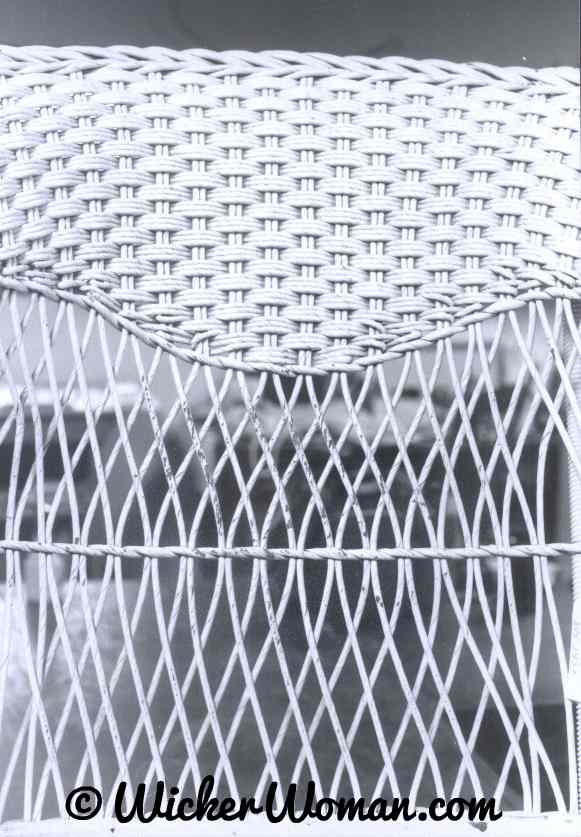
Q: How-to refresh faded, dried-out rattan reed wicker that has been stained and not painted?
A: Well, it’s possible that your unpainted but stained and varnished piece has faded and the top coat of varnish or lacquer has come off because it was sitting in the sun for an extended period of time.
Be sure to do a test area in an inconspicuous spot first to ensure all products and methods are compatible, acceptable, and correct.
To freshen faded rattan reed (original finish, stained, but not painted) wicker: Apply a mixture of 1/3 turpentine to 2/3 boiled linseed oil (purchase this from the store; DO NOT boil linseed oil yourself; it’s highly flammable) to the entire area.
Use a brush to apply the mixture to all the crevices, then let it dry for several days. Each day, blot up any remaining oil that rises to the surface with a lint-free cloth or paper towels.
Reapply an oil-base stain color to match the existing, and as a final step you can apply two light coats of varnish, lacquer or shellac. Make sure the final finish coat is oil-based because linseed oil is an oil-based product and is not compatible with water-based products.
Be certain you let each coat dry completely before beginning with the next, and don’t let anyone sit on the furniture until it has dried for several days to a week.
Q: How do you remove mold and mildew from wicker furniture?
A: Mold and mildew on wicker furniture and cane seats can present quite a problem, and removal is not always easy or permanent. First of all, try to avoid this situation by maintaining an even humidity level in the room where the furniture is used or stored.
If your room has high humidity, consider using a dehumidifier to protect your furniture and maintain your own comfort level. Storing cane or wicker furniture in a damp or high-humidity basement or outside on a porch is just asking for trouble.
If you have rattan reed that is totally woven wicker, not paper fibre, take your piece outside on a warm, sunny, and windy day to clean using a soft scrub brush and a strong solution of bleach in soapy water. You can also use a bit of ammonia in water–but don’t mix bleach with ammonia—it can be deadly!
After the piece is cleaned, rinse well with water and leave it out in the shade to dry thoroughly. When the reed wicker dries, it will shrink up a bit and become firmer and more sturdy.
Don’t allow anyone to sit on the furniture until it has dried for several days; otherwise, the reed wicker strands will stretch out of shape.
Removing mold and mildew from cane seat chairs is easier than removing it from totally woven wicker furniture, but the procedure is the same as was mentioned above, except that you only apply the ammonia and water to the cane seat and not on any parts of the wood.
Be careful with the ammonia solution because it’s possible the cane may be damaged from it and become brittle. And if your furniture is painted, then be extra careful when using this removal technique, because it might damage the finish, lifting the paint.
If after this treatment, you still see little black specks of mold, you might try applying full-strength bleach to each spot, using a small artist’s paintbrush or a Q-tip.
Again, be sure to rinse and dry well and don’t let anyone sit on the piece until completely dry. Sometimes, the black mold spots cannot be removed no matter what you do, but they will not be visible on the bottom side of the seat anyway.
Q: How do you remove cat pee or cat urine odor from wicker Furniture?
A: First, you need to determine whether the pieces are made of paper fibre wicker, rattan reed, or even skin-on rattan stick wicker (check the explanations of the various materials on this page and on the articles page).
There’s not really a perfect solution to this problem, so you might need to return it to the previous owner and ask for your money back, especially if you recently purchased the wicker from a private party.
About the only solution I have is to either paint the wicker set completely, first using a wood primer like Kilz, which prevents “bleed through” of dark paints and some odors. Go over the whole piece with the primer, then give it 2 light final finish coats of oil-base paint. Or you could try going over the whole set with a clear coat of shellac to cover and mask the odor.
If your wicker is made of rattan reed and not paper fibre, another treatment you might try would be to wash it using an equal solution of water and white vinegar. Then, sprinkle baking soda over the wet area to neutralize the odor. Then let the pieces dry completely and vacuum up the baking soda before sitting on them.
Better yet, check to see if professional cleaners in your area treat furniture for smoke damage. They might be able to put the furniture in their carbon chambers to extract the offending smell or have another solution to this problem.
There are some good pre-mixed enzymatic cleaners on the market that you might also consider. My old favorite for getting rid of skunk smell from my dogs when they were attacked is the same for getting rid of cat urine odor.
***However, using the mixture below might cause your rattan reed furniture to change colors and bleach it out since hydrogen peroxide is in the solution. So be aware you might have to do some spot painting or staining on your wicker after the odor is removed.
Consider using a Kilz stain/odor-fighting primer before painting, and if using stain, then an oil-base clear coat finish after the staining will help block any remaining odor.***
First, neutralize the urine spot with a solution of white vinegar and a little water. Saturate the area, then let it dry.
Wear a pair of gloves, to keep the peroxide off your hands and brush on a solution using:
- 1 quart 3% hydrogen peroxide (available from grocery stores and pharmacies)
- 1 teaspoon Dawn liquid dishwashing liquid
- 1/4 cup baking soda
Leave the solution on for a while until it dries completely, then vacuum up the baking soda residue. It’s possible that you will need to repeat this project a second time, so don’t get too hasty in repainting or staining that wicker!
Q: How do you paint wicker furniture?
A: To paint wicker furniture, you can use a brush and apply the paint by hand or a compressor sprayer or paint spray cans.
Be sure to do any preparation of the piece before painting, such as removing flaking paint and using a primer coat before applying the paint.
For more detailed instructions on painting wicker furniture, see my How-to Paint Wicker Furniture page.
Q: How do I find someone to repair my wicker furniture?
A: Locate an expert near you to repair your wicker furniture, recane your cane chair, upholster your couch, or refinish a table by searching the National Furniture Repair Directory™ right here on WickerWoman.com.
You’ll find experts listed from across the country in the specific areas of their expertise.
- Wicker Furniture Restoration
- Seatweaving (Chair Caning, Rush, Splint) Repair
- Furniture Stripping, Repair & Restoration
- Upholstery Repair
Do you have a restoration business and want to increase your visibility so customers can find you? Then, visit the Advertise With Us! page and join hundreds of other professional repair experts on the National Furniture Repair Directory™
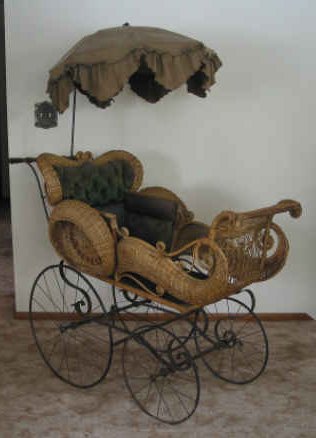
Q: how do you find someone to do chair caning and wicker repair if they aren’t on the Internet?
A. You can find experts to repair your furniture the old-fashioned way. First, canvas your local antique store owners, furniture strippers, upholstery shops, woodworking shops, cabinet shops, carpenters, and friends or coworkers. Many times, chair caners and wicker repair experts don’t advertise but instead use word of mouth.
Most antique dealers and furniture strippers/refinishers know of someone who does quality work, but whether they will share that information with you is another story.
You can still check the many wicker furniture books, where wicker and cane experts are listed in the back of the books, arranged by state and specialty. However, book sources might be outdated.
Richard Saunders has written at least five books, all with experts and suppliers listed in each book, and he’s a certified antique wicker furniture appraiser.
Q: How do you tell the difference between wicker and cane?
A: Wicker furniture is typically made using a variety of materials and is generally speaking, an entire piece of furniture, such as a table, chair, rocker, plant stand, lamp, etc. Cane, on the other hand, is the outer bark or skin of the rattan palm and is usually woven on the seat of a wooden chair.
Q: Where can I buy supplies, instruction books, and tools to make repairs myself?
A: I do not sell supplies, except to the students in my classes. So, I set up a Cane & Basket Weaving Supplies referral page where you will find over 20 mail-order cane and basket supply companies.
You can order caning supplies, basketweaving materials, tools, and instruction books online or via telephone. When you place your order, be sure to mention that you found their ad on the Cane & Basket Supplies page of WickerWoman.com!
Q: What books do you recommend to get more information on antique wicker?
A: If you are a wicker lover, either a collector or interested in restoring wicker furniture, I recommend adding these books to your own private resource library. Here are my book reviews on a few of the books.
Antique Wicker Furniture Books:
- How to Buy and Restore Wicker Furniture by Thomas Duncan
- Collecting and Restoring Wicker Furniture by Richard Saunders
- Collector’s Guide to American Wicker Furniture by Richard Saunders
- American Wicker Woven Furniture from 1850-1930 by Jeremy Adamson
- Wicker Furniture Styles and Prices by Robert W. and Harriet Swedberg
- Fine Wicker Furniture 1870-1930 by Tim Scott
Q: How do I start my own chair caning and wicker repair business?
A: If you are already a basketmaker, the transition from basketweaving to wicker restoration is natural, because the same type of weaving techniques are used in both products. Even if you have no prior weaving experience it is possible to teach yourself, but I would recommend getting some competent instruction from a teacher if possible.
Your best bet would be to try and find a wicker restoration class you could take, or perhaps apprentice with a specialist or at least take private lessons in seatweaving or wicker repair.
Also check with your local community education, college-level courses, arts & crafts schools, basketry guilds and basket workshops, folk schools, & conventions and ask at woodworking schools and technical schools. You never know who might be offering chair caning or wicker repair classes!
Disclaimer: This page was written by Cathryn Peters based on her own personal experiences and knowledge about the antique wicker and chair caning furniture industry acquired over the last 50 years of providing chair caning and wicker restoration services. Viewers may follow these directions using their own best judgment and no liability concerning your results is assumed by The Wicker Woman® or Cathryn Peters.
We hope you’ve enjoyed these wicker furniture questions and answers and will return often to see additional tips and hints! Thank you so much for visiting WickerWoman.com!
We certainly hope you’ve enjoyed all these FREE articles, with hints, tips, and valuable resources.
Thank you for your kind and generous support of this woman-owned information resource website!

What are your thoughts about this resource article page?
Leave your comments below and share with your social networks!
~~Live Well, Laugh Often, Love Much ~~
Happy Weaving, until next time!


Comments are closed.